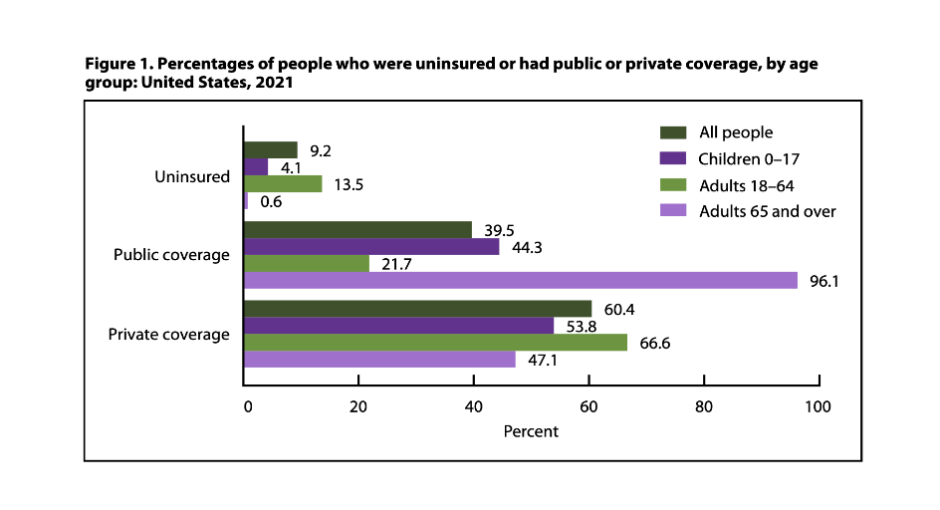The U.S. uninsured rate fell slightly in 2021 to 9.2% (about 30 million people), down from 9.7% (about 31.6 million people) in 2020, the National Center for Health Statistics (NCHS) reports.
NCHS released this and related health insurance coverage findings earlier this month. They are estimates based on an early release of data from the 2021 National Health Interview Survey.
Adults aged 18 to 64 were the most likely to be uninsured (13.5%), followed by children 17 and younger (4.1%) and adults aged 65 and over (0.6%), the survey shows.
Significant Uninsurance Rates for People of Color
Hispanic adults aged 18 to 64 were most likely to be uninsured (30.1%), followed by non-Hispanic Black (14.1%), non-Hispanic white (8.7%) and non-Hispanic Asian adults (6.3%).
Adults aged 65 and over were the most likely to have public coverage (96.1%), followed by children 17 and younger (44.3%) and adults aged 18–64 (21.7%).
Adults aged 18–64 were the most likely to have private coverage (66.6%), followed by children aged 0–17 years (53.8%) and adults aged 65 and over (47.1%)
Of people of all ages, 39.5% had public health coverage and 60.4% had private health insurance, NCHS said. (If respondents were covered by both public and private plans they were included in both categories, NCHS said.)


